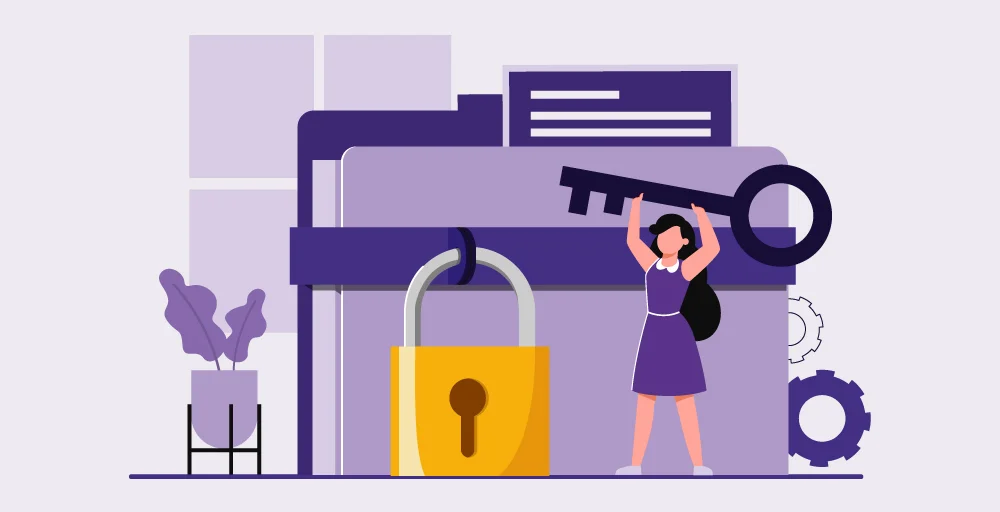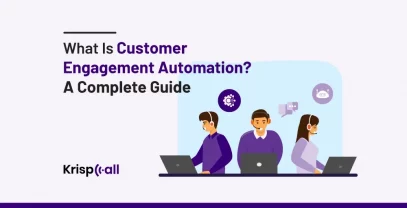Are you having trouble maintaining strong relationships with clients due to intense competition? 🤔
In the competitive business world, building strong relationships with your most important clients is key to growing your business. This is where key account management (KAM) enters. 🤗
Key Account Management (KAM) is a strategy that focuses on taking care of your top clients, making sure they are happy, and helping them succeed. By doing this, you can turn your clients into long-term partners.
In this blog, we are going to walk you through the meaning of Key Account Management and how it can help your business grow by creating strong, lasting connections with your best clients.
So, let’s get started.
🔑 KEY HIGHLIGHTS
- Key Account Management (KAM) is a business strategy where an organization dedicates certain individuals and resources to its most important clients.
- By focusing on the most important clients, offering value-added services, and meeting their needs, businesses can significantly improve customer retention and profitability.
- The stages in Key Account Management include cooperative relationships, tactical relationships, interdependent relationships, and strategic relationships.
- The key account management strategy includes setting objectives, delivering exceptional products, measuring account growth outcomes, and anticipating future account needs.
What is Key Account Management (KAM)?

Key Account Management (KAM) is a business strategy in which an organization dedicates certain individuals and resources to its most important clients. This is done to prioritize, nurture, and mutually benefit relationships between both parties.
The purpose of key account management is to maintain and grow profits from large accounts by offering value-added services and addressing the specific needs of crucial customers.
If you are willing to increase your business revenue, account management and retention should be your top priority. According to research, a 5% increase in customer retention increases profits by as much as 95%.
Key Account Management offers several benefits for organizations. Some of them are:
- It brings major increases in both sales and profits to its major customers.
- It increases customer retention, which is highly profitable.
- It benefits the customers by increasing satisfaction and retention.
- It helps to gain a competitive edge by making your company an inseparable partner.
In other words, the KAM helps you to achieve the best results from the most valuable customers and pursue challenging targets for overall growth.
Why does Key Account Management Matter?
Key Account Management (KAM) is crucial for maintaining long-term relationships with a company’s most important customers. By deeply understanding client needs and offering tailored solutions, KAM fosters mutual support, builds client trust, and makes the supplier an integral part of the client’s team.
Companies that implement KAM are likely to see increased revenue and profit, improved customer retention, and higher levels of customer satisfaction. In essence, KAM should be a top priority for any company aiming to maximize benefits from its most significant accounts, as these are the accounts that drive long-term growth.
What is a Key Account Manager?
A key account manager is an essential position within an organization responsible for developing strategic relationships with clients. Once a client is determined to be a key account, the key account manager’s main goal is to improve the relationship with the client. They look for ways to provide more value and expand the services offered to the client.
This way, the key account manager not only contributes to keeping customers happy but also supports customer relationship management and ensures that important clients stick around.
Stages of Key Accounts Relationships
Key account management (KAM) focuses on managing relationships with valuable customers, ranging from simple transactions to complex partnerships. The key account manager and the supplier organization both need to know about the relationships they have with their customers.
The stages of key account relationships include:
1. Tactical Relationship
The tactical relationship is similar to starting a relationship with a new friend. It’s the early stage where both sides are still getting to know each other. The focus is on business matters like pricing, with occasional conversations between representatives of each party.
However, if there is potential for a bigger partnership down the road, employees should focus on deepening the relationship.
2. Cooperative Relationship
During the cooperative relationship stage, more people from both sides are involved in the production and delivery processes. This stage ensures orders are fulfilled smoothly and both parties learn to collaborate effectively.
However, even in this stage, an attentive client may still compare prices with competitors and may leave if they find a better offer. If the account’s potential is high, then look at previous investments and adjust the investments based on the account to develop better relations.
3. Interdependent Relationship
In the interdependent relationship stage of key account management, the client exclusively purchases your products/services and engages you in their planning, fostering open collaboration. By effectively meeting their needs, you secure rising revenue and profits.
In this profitable stage, we can anticipate a boost in sales or business growth over the medium to long term. This calls for a reassessment of investments, particularly for accounts with lower potential.
4. Strategic Relationship
A strategic relationship is a situation where the supplier and client have a long-term strategic key account management agreement. This is an open relationship at all levels with high profitable rates and visibility of long-term business growth.
This stage is appropriate for accounts that demonstrate a high potential; nevertheless, when the potential is low, it may be appropriate to consider changing investments in the relationship.
Key Account Management & Sales: What are the Differences?
Key Account Management and sales have the same purpose of increasing revenue but differ in their strategy and concentration.
Key Account Management mainly focuses on the maintaining and nurturing of existing strategic clients. It creates deep and long-lasting relationships aimed at mutual growth and value creation.
On the other hand, sales are mainly concerned with getting new customers and closing deals, which are often short-term in nature. Sales interactions are more transactional and reactive, unlike Key Account management, which implies proactive and consultative interactions.
Likewise, key account management emphasizes the importance of cooperation between different departments to meet client needs, while sales mostly collaborates with marketing and sales teams.
How to Identify Key Accounts?
The key accounts can be identified based on the different criteria. Some of these important criteria to determine key accounts are:
1. Product Fit
Most importantly, your key accounts and your product or service should be well-matched. Your ideal customer is the one who can use your product effectively and efficiently. The product that is a perfect fit for your key accounts will be used by clients to achieve their goals, and thus, they will also tell others about it, which will result in business growth.
2. Existing Relationships
Do not always look at the renewals; pay attention to the strength of your relationship with your customer. It is crucial to not just be a product vendor but also try to become a strategic partner. Get deeply involved with the main customers to strengthen the bond and keep growing steadily.
3. Revenue Potential
Choose the accounts that can grow most rapidly, not just those currently bringing in a lot of money. These could be the accounts of small, medium, or large sizes that have an increasing need for your products or services. You need to ensure that their needs are recurring and complex and enable greater volume and diversity in the long run.
4. Geographic Alignment
Reflect on the situation of your accounts and make sure that your account managers can easily service and grow them, whether in person or virtually. Accounts distributed in different time zones can be difficult to handle efficiently. Therefore, geographical alignment is a must.
5. Solvency
The financial stability of each account is one of the most important aspects that should always be taken into account. See is their financial status good or are they a high-risk start-up? This way you can prevent yourself from using resources on accounts that may not be there in the long run.
6. Annual Recurring Revenue (ARR)
Businesses should always check the long-term recurring revenue of an account. It will help the business to estimate its current profitability and future growth. This will also allow your business to realize the growth potential and profitability of a company.
7. Shared Vision
Seek out customers with needs, goals, and strategies that align with your business. This results in a two-way profit, as you will be able to work toward similar goals and achieve better performance. This better implementation assists your clients in attaining their goals.
Key Account Management Strategy
After you have identified the key account accounts, now it’s time to implement those strategies. Here is a step-by-step guide to implementing the key account management strategy.
1. Set Objectives
Before declaring a customer as a key account, it is important to set the objectives straight. Apply the why, how, and what framework to learn about the importance of having a key account management strategy. This leads to the setting of measurable goals and the alignment of expectations both inside and outside the organization.
2. Deliver Exceptional Products and Services
After the objectives are set, you will need to determine how you will achieve them by producing great products and services. Your key account manager must be closely connected with sales, service, and operations teams. Create definite ways and steps for key accounts that will help your client know what to expect and what your team delivers.
3. Measure Account Growth Outcomes
The purpose of a key account management strategy is to increase the account’s revenue and relationship. The growth of this key account will be measured by metrics related to the criteria used for selecting it. For instance, you can monitor the rate of product adoption or usage to see how your product is useful to the client.
4. Anticipate Future Account Needs
Forecast and prepare for the future requirements of the key account. Seek ways to boost the average size of transactions or have the key account try new products or services. You can keep the relationship alive and growing through such a vision in the future.
How can You Determine if the KAM Strategy is Right for Your Business?
One can determine if the KAM strategy is right for your business by following ways:
1. How Transactional Your Current Sales Process is
Assess if your current sales cycle is short and does not involve many interactions with prospects. Key account management may not be the best option if your sales team is not used to consultative selling techniques, which are needed to manage key accounts.
2. Consider Upselling and Cross-selling Potential
Think about whether your product or service has features that can be used for upselling or cross-selling after the sale. Retaining key account relations is useless if there are no more money-making opportunities after the first sale.
3. Ability to Land and Expand
Determine if your company can strengthen its ties with key accounts by selling to other departments, offices, or subsidiaries. Key account management is a good thing if you can expand accounts beyond the initial sale.
4. Competitive Landscape
Examine if a key account program can be a source of competitive advantage. If the key account status distinguishes your product from others and can make someone choose you over other companies, then it is worth taking that risk.
Key Account Management Best Practices in Consumer Goods
Key account managers’ major concerns should always be customer satisfaction and revenue growth. Now, let’s look at some of the best Key Account Management practices that can sustainably grow the consumer goods industry:
- Unify data for planning and forecasting: In consumer goods, data is usually scattered across different departments, making planning difficult. Use a centralized system like Consumer Goods Cloud to get real-time customer data, making more informed decisions and accurate forecasting.
- Automate for efficiency: To cope with the increasing data requirements, substitute manual spreadsheets with automation platforms. This not only saves time but also helps to make decisions faster and give more strategic recommendations for customers.
- Boost trade promotion effectiveness: Simplify the trade promotion management process with advanced tools that will help you meet business goals. These tools streamline trade spending and improve sales performance while giving finance a clear insight into trade fund activity.
- Grow customer satisfaction and revenue: Focus on the most important accounts and develop strategies to maintain and grow these relationships. One can also provide account managers with the tools to access necessary information and provide efficient service, leading to customer trust and satisfaction.
Conclusion
In short, Key Account Management (KAM) is vital for building strong relationships with key customers. By offering tailored services and understanding their needs, KAM boosts loyalty and revenue.
Implementing KAM not only strengthens your business’s market position but also sets the stage for lasting success. It’s a straightforward strategy for nurturing and getting the most out of your top customer connections, ensuring ongoing growth and competitiveness.
FAQs
How can you be a good key account manager?
A good key account manager knows his clients’ businesses well and has built a trustworthy relationship with them through regular, open communication. Hence, to be a good account manager, you should also always meet clients’ needs by predicting and providing customized solutions. In short, you need to become a strategic partner instead of just a seller.
How do you build a key account management plan template?
You can build a key account management plan template by following these steps:
Step 1: Establish a user profile and develop it from research.
Step 2: Understand your client’s requirements.
Step 3: Learn the target market of the customer.
Step 4: Assign the most suitable team member.
Step 5: Draw up your strategy to make that all-important impression.
Step 6: Translate your goals and benefits into actions and promises.
Step 7: Empower your client and put your energy into evolving together.
Step 8: Try to be impressive at every turn.
Step 9: It is recommended that you tailor your strategy on a quarterly basis.
What are the steps to implement a key account management process?
The steps to implement a key account management process are:
- Identify key accounts
- Build detailed profiles
- Assign dedicated team members
- Understand, and map client needs
- Develop tailored strategies
- Establish clear objectives and actions
- Align with clients
- Consistently deliver value
- Regularly review and refine
What are the differences between a Key Account Manager and an Account Manager?
Here are the major differences between a key account manager and an account manager:
| Aspect | Key Account Manager (KAM) | Account Manager (AM) |
|---|---|---|
| Focus | High-value, strategic clients | Broader range of clients |
| Relationship Depth | Deep, long-term relationships | More transactional relationships |
| Strategic Involvement | Strategic planning with clients | Immediate sales and service |
| Internal Collaboration | Works closely with various internal departments | Primarily collaborates with sales and service teams |





